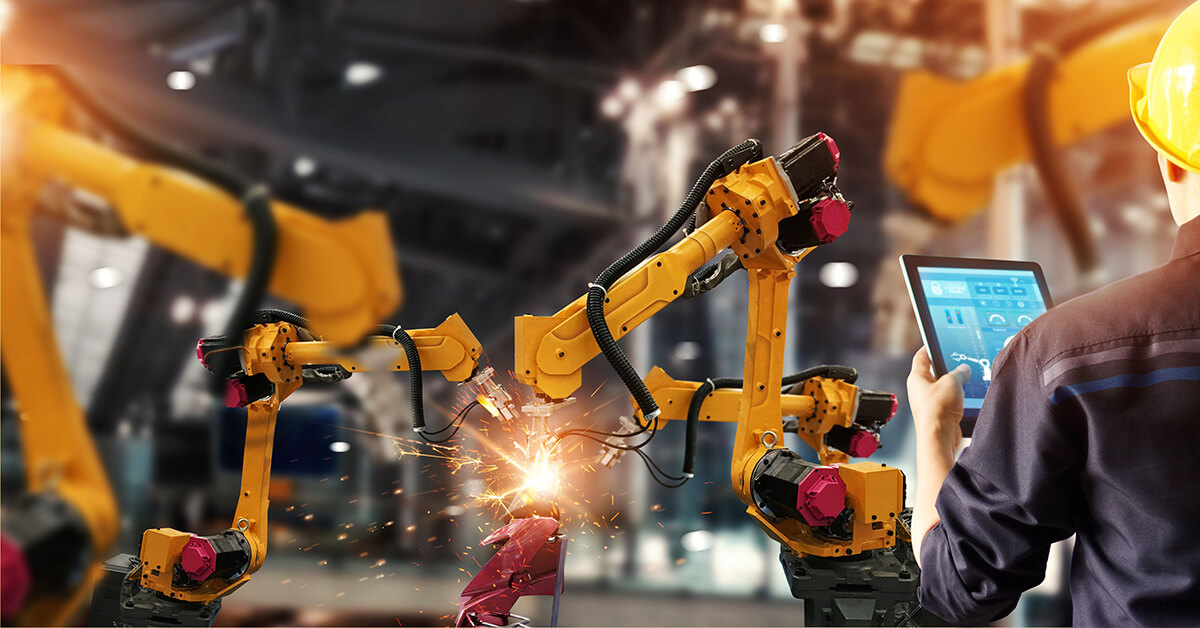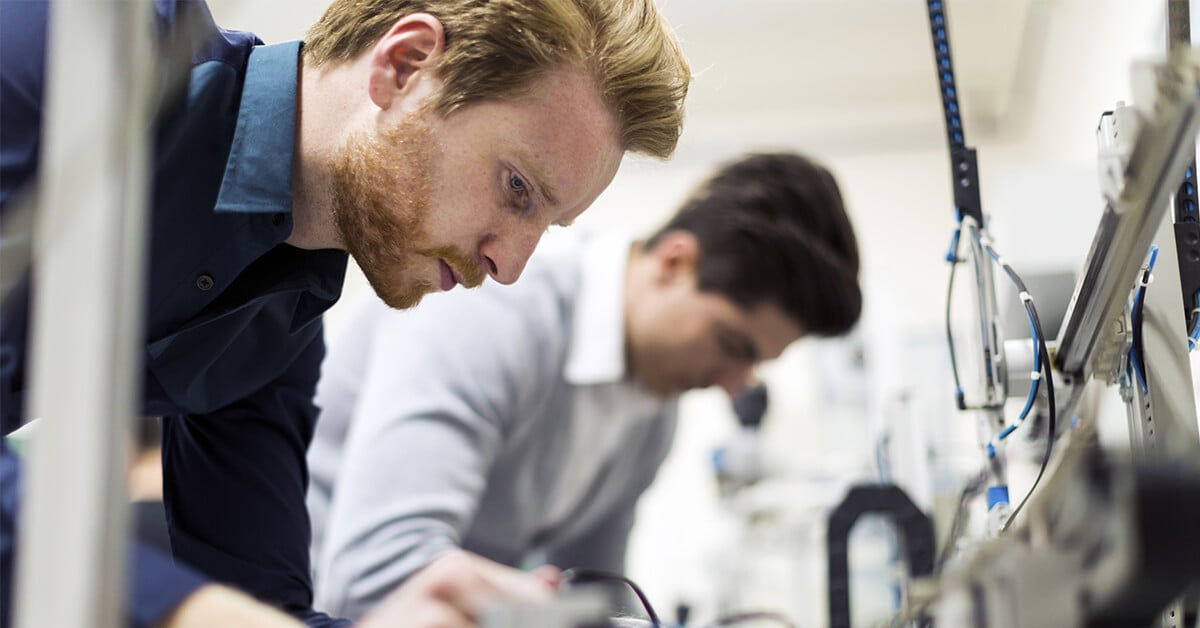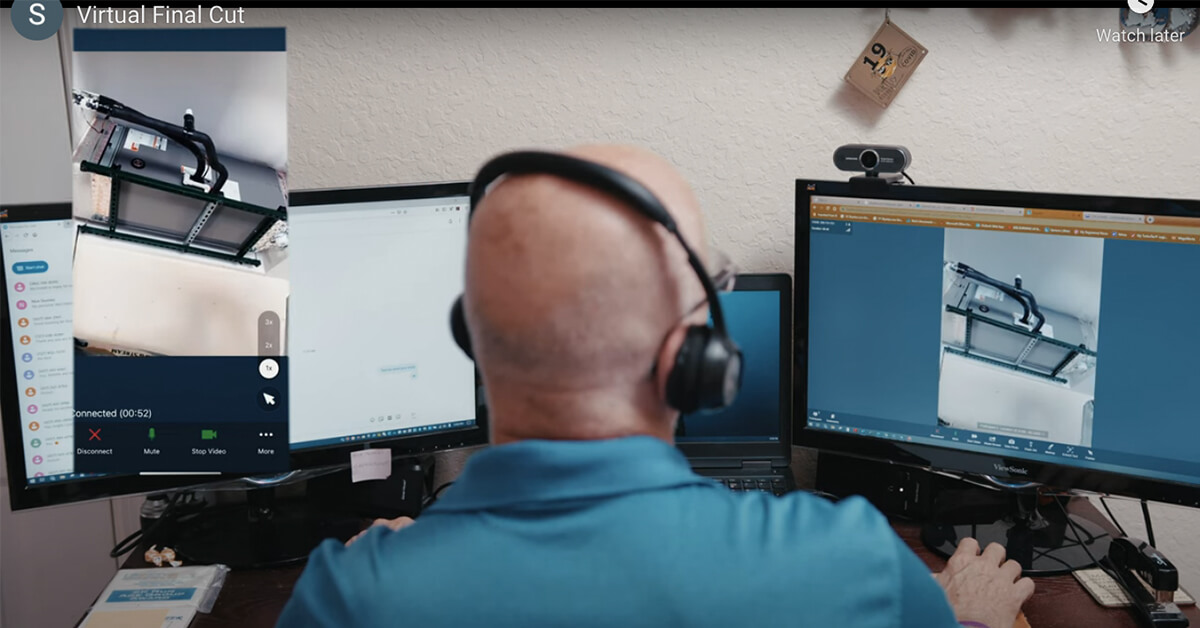Looking For Ways to Reduce Your Company’s Carbon Footprint? Try Remote Video Inspections and Audits
In November 2021, representatives from nearly 200 countries gathered in Glasgow, Scotland for the 26th UN Climate Change Conference of the Parties (COP26). When the conference closed after extended negotiations, UN Secretary-General António Guterres was critical of the agreement participants reached and he wasn’t alone.
There is increasing concern about the acceleration of climate change and that the world’s major governments aren’t doing enough to prevent a global climate catastrophe.
But governments aren’t the only organizations in a position to make a difference. Perhaps encouragingly, the major corporations of the world are signing onto the RE100 pledge to switch to 100 percent renewable electricity. And the good news is that the road to net zero emissions isn’t reserved for Fortune 100 companies that can afford to switch to green energy in short order.
Reducing your company’s direct energy use is the first step to reducing your carbon footprint, including energy use in your office and the number of truck rolls your team requires.
For example, to address your inspection and audit needs, you can use remote video inspections to cut the number of miles your team drives to reach remote locations (and even sites that are just down the road). Let’s take this example a few steps further.
Start with Direct Emissions: How to Tackle Scope 1
Once you start reading about how to reduce your carbon footprint, you’ll quickly hear about the Greenhouse Gas Protocol, which provides a standardized framework to help “measure and manage greenhouse gas (GHG) emissions from private and public sector operations, value chains and mitigation actions.”
This set of standards was developed by the World Resources Institute (WRI) and the World Business Council for Sustainable Development (WBCSD) to ensure that there is a global standard for calculating corporate greenhouse gas emissions, which includes your company’s carbon footprint.
This definition includes three scopes, the first of which cover direct greenhouse gas emissions from your corporation and includes any output associated with your company’s direct transportation. It’s important to note that indirect emissions from truck rolls further up your value chain are covered under Scope 3 of the protocol – as you get started, focus first on reducing your carbon footprint by reducing any unnecessary or avoidable emissions.
To continue with our example around inspections and audits, you can quickly limit the gallons of petrol required to fuel your team’s vehicles by swapping site visits with virtual inspections and audits. To do this, you just need the right remote inspection technology to power your team’s conversations with onsite staff.
Triage Inspections and Audits Using Video Calls to Help Limit Technology
While you may not be able to limit all Scope 1 emissions through cuts, you can use the same video inspection technology to triage your team’s time and the carbon emissions associated with onsite inspections. By doing routine inspections and audits via video technology, you can easily identify which sites require onsite visits and further attention.
You may even find that this helps your bottom line in several ways:
- Limit your reliance on car and truck travel during a time when increasing gas prices show no signs of going down.
- Avoid the cost of a truck roll with every inspection and audit – $1,011 on average, according to the Technology and Services Industry Association.
- Increase your team’s productivity by enabling inspectors and auditors to perform more remote checks in a day.
- Decrease risks across your organization by limiting the exposure of your inspection or audit team and increasing safety on more sites each day.
As you take advantage of new efficiencies with the help of remote video inspection technology, you may also see increased employee satisfaction, as the hassles of sitting in traffic and navigating to remote sites go away.
Limit the Need for Truck Rolls with Remote Video Technology
If limiting the mileage on your company vehicles sounds like small potatoes relative to the carbon footprints associated with the global shipping supply chain, you’re right.
The relative impact of reducing your truck rolls using remote inspection technology is small within the global context, but it is still impactful, and every step you can take to reduce your company’s carbon footprint makes a difference.
While there are limited segmented studies on the carbon emissions of inspectors, we do have evidence that the impact of reducing commutes is tangible on a global scale. Last year, the International Energy Agency (IEA) studied the impact of the initial reduction in commutes worldwide due to the COVID-19 pandemic:
“By analysing commuter trends and labour market data, we found that if everybody able to work from home worldwide were to do so for just one day a week, it would save around 1 percent of global oil consumption for road passenger transport per year. Taking into account the increase this would bring in energy use by households, the overall impact on global CO2 emissions would be an annual decline of 24 million tonnes (Mt) – equivalent to the bulk of Greater London’s annual CO2 emissions.”
To bring this back to the impact of your team’s travel to and from sites for inspections and audits, don’t lose sight of the fact that at scale, sending out individual trucks and drivers can significantly impact your carbon footprint.
To cut these emissions off at the source, make the switch to remote inspection tech.
Reduce Your Scope 1 Emissions to Reduce Your Carbon Footprint
Scope 1 emissions are often thought of as the most straightforward to address and the smallest targets for reform within a company. Perhaps consequently, it can seem like they aren’t all that important within the grand scheme of global climate change.
But the truth is that your company – like all others – should begin by avoiding unnecessary emissions before shifting to green sources of energy. It’s the most affordable and immediately impactful approach to this global issue, and it will help you reduce your carbon footprint and look for ways to improve your operational efficiency.
Schedule a demo to see how Blitzz can transform your remote video inspection and audit process today.




